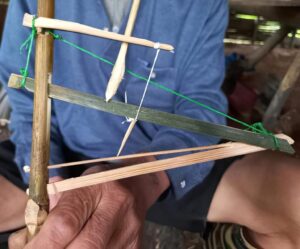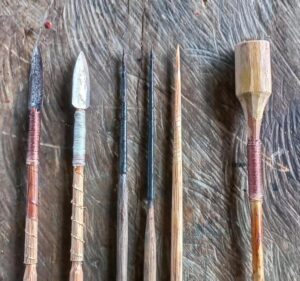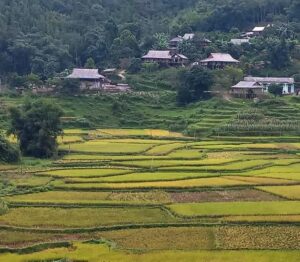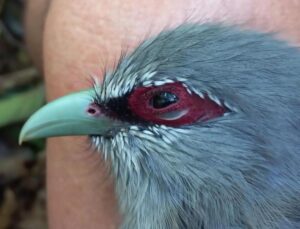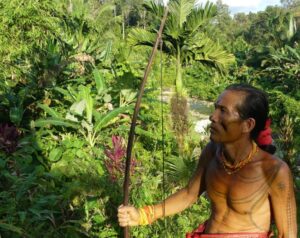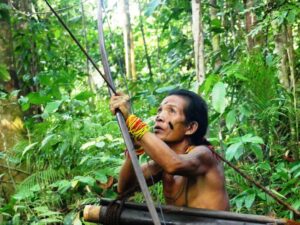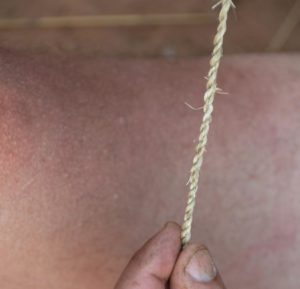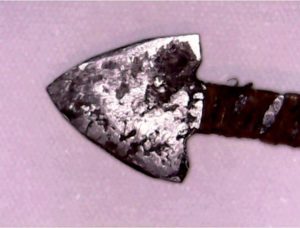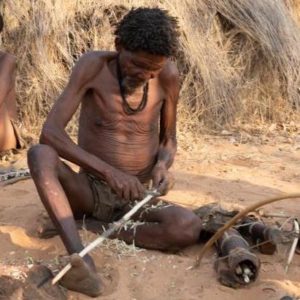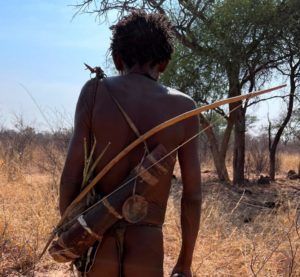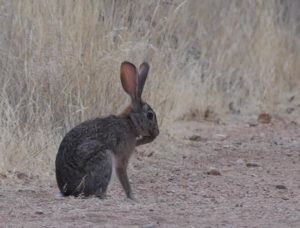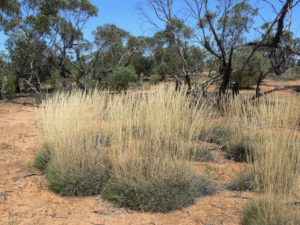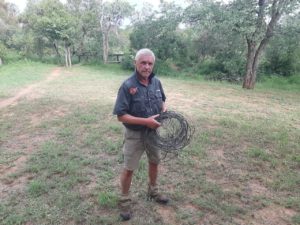Hunting
Blowpipe hunting with Orang Asli people in Malaysia
Blowpipe hunting is still prevalent in many Orang Asli communities in Malaysia. Although the government strictly enforces hunting rules and regulations, it is practically impossible to supervise all the remote small hamlets and villages. On the other hand, it is…
Scissor Traps of Thái Đen tribals in Vietnam
Scissor traps are universal traps that can catch all kinds of small rodents. They are easy to produce from bamboo but need one item to be sourced in the villages. These are strips of bicycle tubes, which are not easy…
Bow Traps of Thái Đen tribals in Vietnam
Bow traps are used by Black Thai tribal people in Northern Vietnam to catch small rodents. These ingenious devices are carved from pieces of bamboo and some strings. The closing force of the scissor comes from a bow-like structure above…
Deadfall Traps of Thái Đen tribals in Vietnam
Deadfall traps with a Figure-4 trigger are essential knowledge for survivalists and bushcrafters worldwide. Thái Đen (Black Thai) tribal people at Pù Luông Nature Reserve in Northern Vietnam use these traps and the Figure-4 trigger in a modified version. Modifications…
Mentawai arrow poison
The Mentawai people use poison on their arrows to hunt game. In previous articles on this website, we discussed the Mentawai people’s hunting methods. Then, we presented an actual hunt for Flying foxes. We then discussed the longbows used on…
Hunting arrows and quivers of the Mentawai people
Bows and arrows are the primary hunting weapons used by the Mentawai people. Their bows were already described here. This article will explain the different types of arrows used for these bows and give an insight into the quivers used….
Animal species collected by rice farmers in the Red River Delta
Rice farmers in secluded areas of the Red River Delta in Northern Vietnam need dietary additions to their staple rice dishes. Vegetables are harvested from around their homes and surrounding tropical Evergreen forests. Animal proteins are mainly collected in and…
Green-billed Malkoha bird on the spit
The Green-billed Malkoha is a common bird in Vietnam’s semi-deciduous tropical forests. An expedition led to the capture of one who was cooked for lunch. This and other species are often hunted by villagers supplementing their diet with this and…
Mentawai Hunting bows
Hunting bows are the main hunting weapon for the Mentawai people and are very personal items for a hunter. They have great skills in using them and practice shooting from childhood onwards. During my stay with the Mentawais, I looked…
Flying fox hunting
Flying fox hunting remains a prevalent activity in Indonesia, particularly in Sumatra. Aceh, the northernmost province, is the epicenter of the trade in Flying fox meat. Locals believe that this meat possesses qualities to alleviate asthma, although this claim lacks…
Hunting methods of Mentawai people
The hunting methods of the Mentawai people have developed over about 3000 years. Their ancestors were of a Mongolian race that migrated from Taiwan via the Philippines to modern-day Indonesia. They arrived around 1000 BC at Siberut island in West…
Making bow strings from plant fibers
The manufacture of bow strings from plant materials is a skill that has been practiced by Bushmen for a relatively short period. Around the year 1900, they learned from neighboring Bantu-speaking tribes how to use Sansevieria fibers to create bow…
Composition of Bushman Arrows
The topic of the composition of Bushman arrows for hunting is vast and intricate. Numerous anthropological studies have documented the unique designs utilized by nearly every family group of Bushmen in Southern Africa. These designs are often a result of…
Making bushmen bows for hunting
The Bushmen, generally speaking, employ bows and poisoned arrows for “tracking and stalking” during hunting in Northern Namibia and North-Western Botswana. The various Bushmen tribes utilize different materials and techniques for crafting these weapons. However, in this article, we will…
Bushmen hunting techniques in Namibia
In earlier times, the Ju/:hoansi bushmen of North-East Namibia employed four distinct traditional techniques for hunting animals. These techniques have remained unchanged over time, as even in the present day (in 2023), the Ju/:hoansi continue to eschew the use of…
Determining wind direction in savannas
Determining wind direction is an absolutely necessity when on a hunt or trail in Southern African wilderness areas. Besides being constantly aware of the wind direction, also the own relation to the sun has to be checked all the time….
Dormouse trapping in southern Slovenia
Worldwide, the dormouse family consists of three sub-families and 29 species and in Slovenia the ‘European edible dormouse’ (Glis glis) is native. There live three other dormouse species: garden dormouse (Eliomys quercinus), forest dormouse (Dryomys nitedula), and hazel dormouse (Muscardinus…
Spinifex grass – friend and foe
The common name ‘Spinifex grass’ is not fully correct as a botanical term for discussed grasses, as commonly named ‘Spinifex’ grasses belong to the genus ‘Triodia’, whereas the genus ‘Spinifex’ itself contains mainly coastal grasses. Whatever it is, the common…
Snares for poaching are a real problem
Many National Parks, Private Game Reserves, and Game Farms in Southern Africa are under heavy pressure of snares for poaching. Not only poaching for rhino horn, but also indiscriminate poaching for meat. Rhino horn poaching is mainly organized by internationally…



